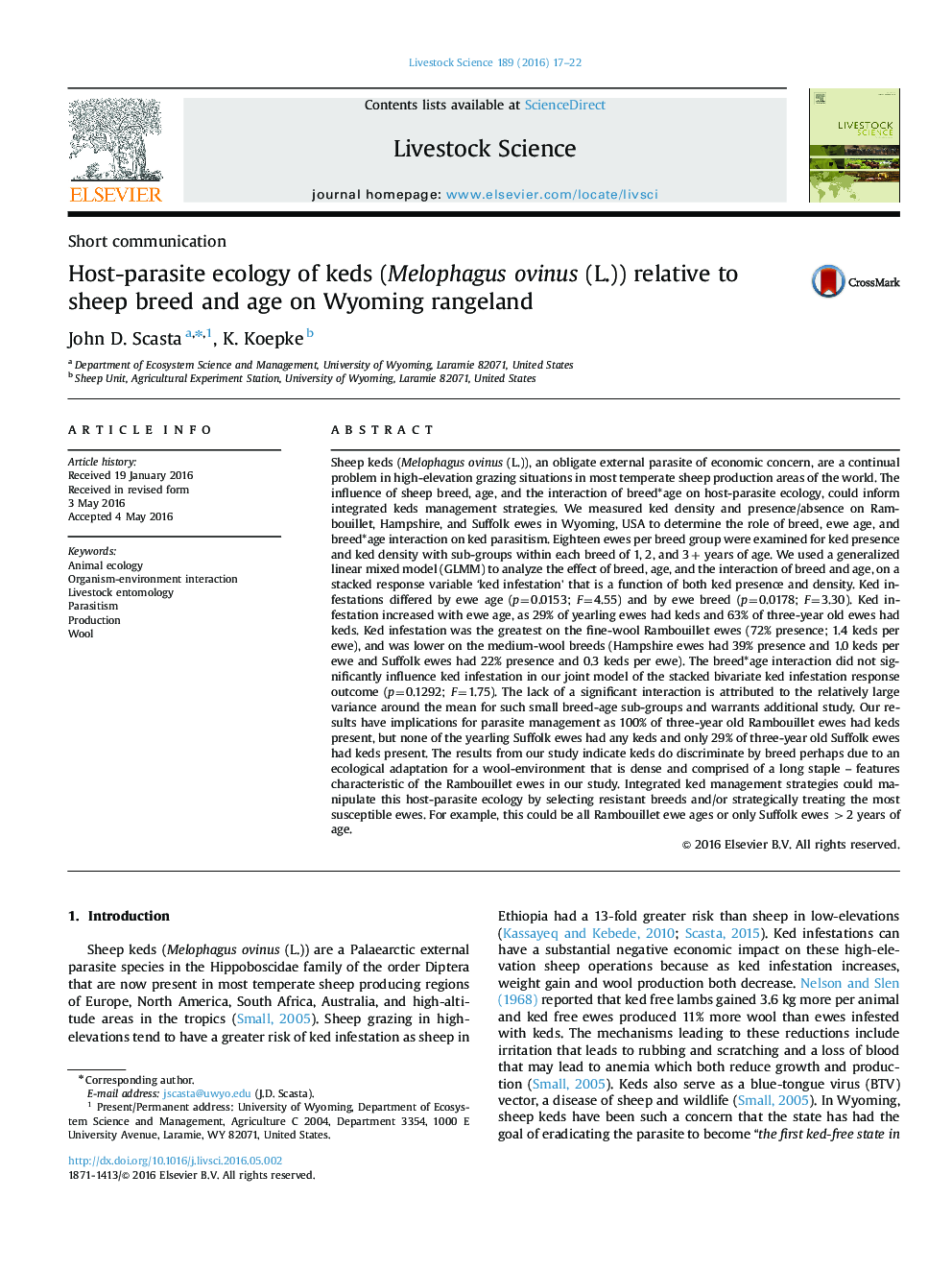| Article ID | Journal | Published Year | Pages | File Type |
|---|---|---|---|---|
| 2446915 | Livestock Science | 2016 | 6 Pages |
•Keds, an external parasite of sheep, are of concern in high-elevation rangelands.•We measured keds on Rambouillet, Hampshire, and Suffolk ewes of variable ages.•Ewe age and breed significantly influenced ked infestation.•Older ewes and Rambouillets had greater infestations than other ages or breeds.•Host-parasite ecology of sheep and keds informs parasite management strategies.
Sheep keds (Melophagus ovinus (L.)), an obligate external parasite of economic concern, are a continual problem in high-elevation grazing situations in most temperate sheep production areas of the world. The influence of sheep breed, age, and the interaction of breed*age on host-parasite ecology, could inform integrated keds management strategies. We measured ked density and presence/absence on Rambouillet, Hampshire, and Suffolk ewes in Wyoming, USA to determine the role of breed, ewe age, and breed*age interaction on ked parasitism. Eighteen ewes per breed group were examined for ked presence and ked density with sub-groups within each breed of 1, 2, and 3+ years of age. We used a generalized linear mixed model (GLMM) to analyze the effect of breed, age, and the interaction of breed and age, on a stacked response variable ‘ked infestation’ that is a function of both ked presence and density. Ked infestations differed by ewe age (p=0.0153; F=4.55) and by ewe breed (p=0.0178; F=3.30). Ked infestation increased with ewe age, as 29% of yearling ewes had keds and 63% of three-year old ewes had keds. Ked infestation was the greatest on the fine-wool Rambouillet ewes (72% presence; 1.4 keds per ewe), and was lower on the medium-wool breeds (Hampshire ewes had 39% presence and 1.0 keds per ewe and Suffolk ewes had 22% presence and 0.3 keds per ewe). The breed*age interaction did not significantly influence ked infestation in our joint model of the stacked bivariate ked infestation response outcome (p=0.1292; F=1.75). The lack of a significant interaction is attributed to the relatively large variance around the mean for such small breed-age sub-groups and warrants additional study. Our results have implications for parasite management as 100% of three-year old Rambouillet ewes had keds present, but none of the yearling Suffolk ewes had any keds and only 29% of three-year old Suffolk ewes had keds present. The results from our study indicate keds do discriminate by breed perhaps due to an ecological adaptation for a wool-environment that is dense and comprised of a long staple – features characteristic of the Rambouillet ewes in our study. Integrated ked management strategies could manipulate this host-parasite ecology by selecting resistant breeds and/or strategically treating the most susceptible ewes. For example, this could be all Rambouillet ewe ages or only Suffolk ewes >2 years of age.
